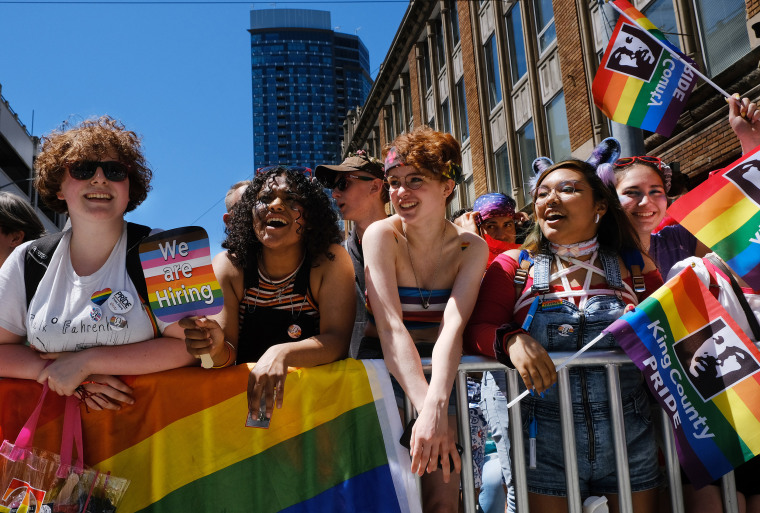WASHINGTON — Last month’s Dobbs decision from the Supreme Court, which overturned Roe v. Wade, also included some news about same-sex marriage. In his majority opinion, Justice Clarence Thomas wrote about his desire to reconsider other precedents from the high court, including 2015’s Obergefell v. Hodges, which legalized marriage between people of the same sex.
But reversing that decision would not be easy, and the landscape of the issue has shifted sharply in the last decade.
Data show there have been dramatic increases in support of gay marriage and in how many Americans self-identify as LGBTQ. Furthermore, there are signs of a generational shift among young people who have grown up since same-sex marriage has been legalized, marked by a remarkable increase in LGBTQ self-identification in recent years.
Looking at the data, 2012 stands out as crucial year in the story of LGBTQ acceptance in the U.S. On May 9 of that year, President Barack Obama announced that he supported same-sex marriage. Later that year, the number of Americans who supported it jumped above 50% in Gallup’s polling data, and it has never dipped below since.
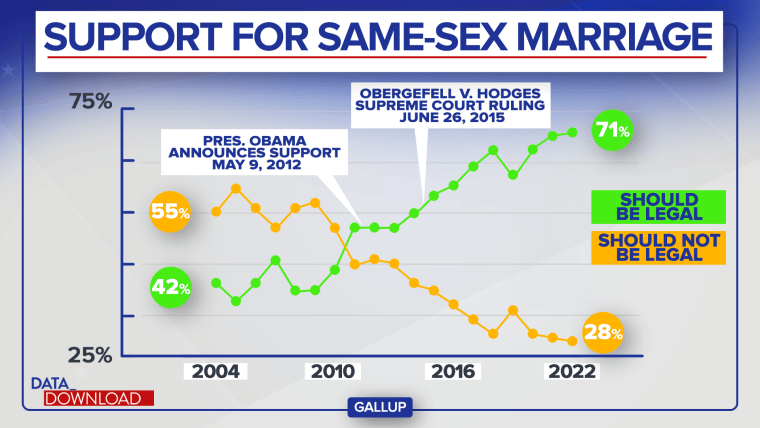
Until then, the percentage favoring legal same-sex marriage generally bounced around in the 40s, rising and falling often around events in the news or political positioning by the major parties. But the official endorsement by the White House seemed to push the numbers higher.
Three years later, in June 2015, the Supreme Court decided Obergefell, and the support for same-sex marriage climbed above 60%. Support for legal same-sex marriage has not dipped below 60% in Gallup’s data since then. Support for such unions currently stands at a record 71%.
Those are big numbers and big changes in societal attitudes, and they may be playing a role in who “self-identifies” as LGBTQ. The percentage of Americans who describe themselves as something other than heterosexual has more than doubled since 2012.
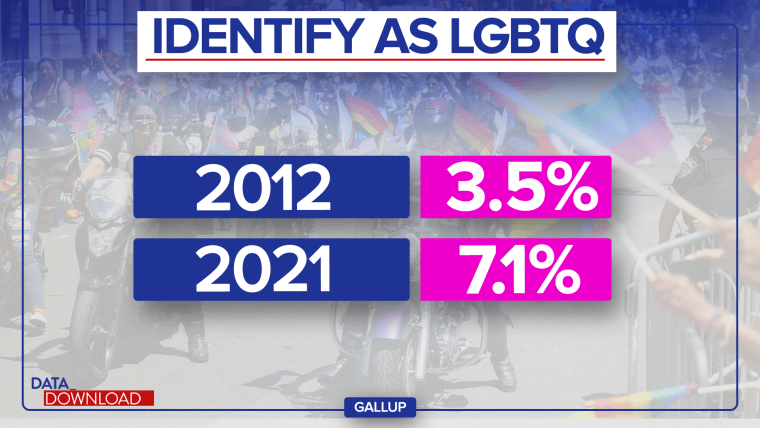
To be clear, that does not mean the number of people who actually are LGBTQ has climbed that much in that time — or even that the number reflects the actual percentage of Americans who personally identify as LGBTQ. In some sense, “self-identifying” as lesbian, gay, bisexual or transsexual, even in a survey, is an act of feeling comfortable sharing that information with the broader public — and for some respondents, that may have become easier as same-sex marriage became a more accepted part of the culture.
And that may be especially true for members of Generation Z. Born from 1997 to 2012, they have largely known same-sex marriage to be legal and have grown up in an era of increasing acceptance for LGBTQ Americans.
In the last few years, the percentage of Gen Z Americans who self-identify as members of the LGBTQ community has almost doubled.
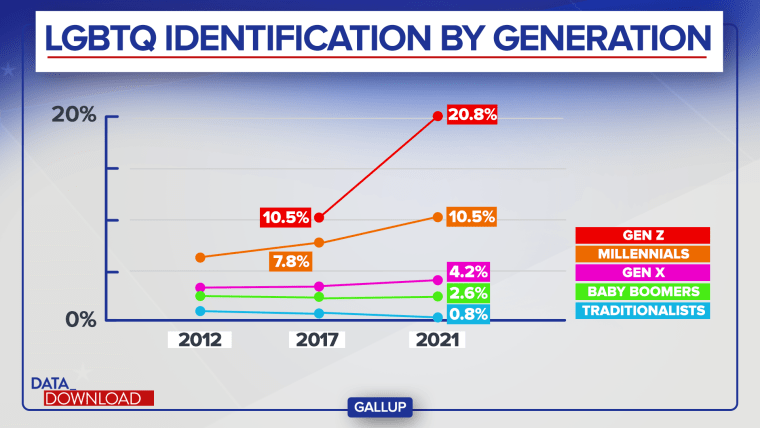
The numbers for the self-identifying LGBTQ population are up for most generational groups since 2012, including Generation X, for which the number is up by 1 percentage point, and millennials, whose number is up by 4.7 points. But among adult Gen Zers, the figure is up by more than 10 percentage points since just 2017.
(There were no 2012 figures for Gen Z, because no members of that generation had reached adulthood yet.)
That’s a big jump, and it means that 1 in every 5 adult members of Generation Z self-identify as LGBTQ.
And when you combine the millennial and Gen Z populations, you get a sense of the generational changes that have already occurred around the LGBTQ population in the U.S.
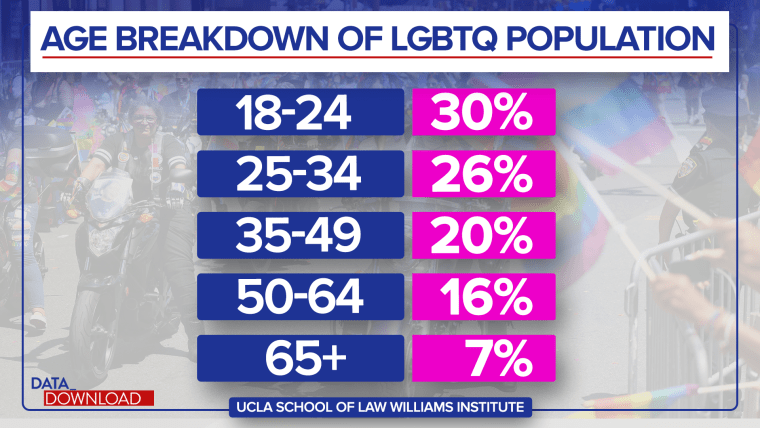
More than half of the nation’s self-identifying adult LGBTQ population, 56%, are under 35, according to data from the Williams Institute, a sexual orientation and gender identity research institution at UCLA.
Remember, this is tallying just adults. So that 56% of the adult LGBTQ population comes from what is just one 16-year cohort of Americans, those ages 18 to 34. The other 44% of the adult self-identifying LGBTQ population comes from all other adults — everybody 35 and older, a much bigger collection of people.
Together, the numbers not only show how much the country has changed on the issues of same-sex marriage and LGBTQ rights; they also suggest those changes have had broader impacts on the nation. And if the trends continue, the constituency supporting same-sex marriage and LGBTQ rights seems likely to grow more.
CORRECTION (July 3, 2022, 6:45 p.m. ET): A previous version of this article misstated when the Supreme Court overturned Roe v. Wade. It was June 24, not last week.
